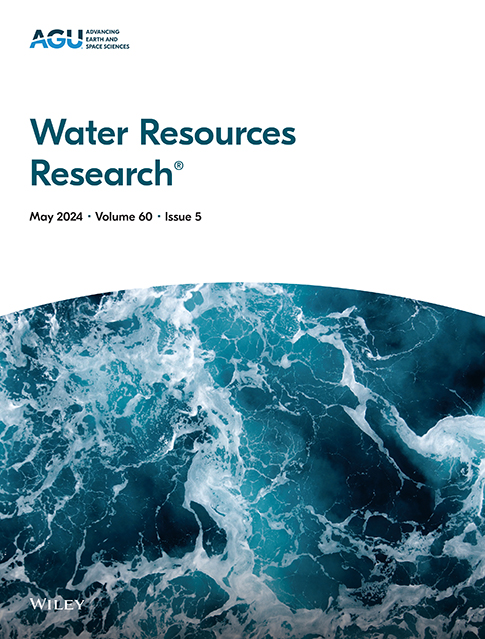Uncovering Historical Reservoir Operation Rules and Patterns: Insights From 452 Large Reservoirs in the Contiguous United States
IF 5
1区 地球科学
Q2 ENVIRONMENTAL SCIENCES
引用次数: 0
Abstract
Reservoir operations are influenced by hydroclimatic variability, reservoir characteristics (i.e., size and purpose), policy regulation, as well as operators' experiences and justification. Data-driven reservoir operation models based on long-term historical records shed light on understanding reservoir operation rules and patterns. This study applies generic data-driven reservoir operation models (GDROMs) developed for 452 data-rich reservoirs with diversified operation purposes across the CONUS to explore typical operation rules and patterns. We find that the operating policies of any of these reservoirs can be modeled with a small number (1–8) of typical operation modules. The derived modules applied to different conditions of the 452 reservoirs can be categorized into five basic types, that is, constant release, inflow-driven piecewise constant release, inflow-driven linear release, storage-driven piecewise constant release, and storage-driven nonlinear (or piecewise linear) release. Additionally, a joint-driven release module, constructed from these five basic types, has been identified. The analysis further shows the module application transition patterns featuring operation dynamics for reservoirs of different operation purposes, sizes, and locations. The typical module types can be used as “Lego” bricks to build operation models, especially for data-scarce reservoirs. These module types and their application and transition conditions can inform Standard Operation Policy (SOP) and Hedging Policy (HP) with specific inflow, storage, and/or both conditions.揭示历史上的水库运行规则和模式:美国毗连地区 452 座大型水库的启示
水库运行受水文气候多变性、水库特征(即规模和用途)、政策法规以及运营商经验和理由的影响。基于长期历史记录的数据驱动型水库运行模型有助于理解水库运行规则和模式。本研究采用通用的数据驱动型水库运行模型(GDROMs),针对美国本土 452 座数据丰富、运行目的多样化的水库进行开发,以探索典型的运行规则和模式。我们发现,任何这些水库的运行政策都可以用少量(1-8 个)典型运行模块来建模。适用于 452 座水库不同条件的衍生模块可分为五种基本类型,即恒定泄洪、流入驱动的片断恒定泄洪、流入驱动的线性泄洪、存储驱动的片断恒定泄洪和存储驱动的非线性(或片断线性)泄洪。此外,还确定了由这五种基本类型构建的联合驱动释放模块。分析进一步显示了模块应用的过渡模式,这些模式具有不同运行目的、规模和位置的水库的运行动态特征。这些典型的模块类型可用作构建运行模型的 "乐高 "砖块,尤其适用于数据稀缺的水库。这些模块类型及其应用和过渡条件可为标准运行政策(SOP)和对冲政策(HP)提供信息,并具有特定的流入、存储和/或两种条件。
本文章由计算机程序翻译,如有差异,请以英文原文为准。
求助全文
约1分钟内获得全文
求助全文
来源期刊

Water Resources Research
环境科学-湖沼学
CiteScore
8.80
自引率
13.00%
发文量
599
审稿时长
3.5 months
期刊介绍:
Water Resources Research (WRR) is an interdisciplinary journal that focuses on hydrology and water resources. It publishes original research in the natural and social sciences of water. It emphasizes the role of water in the Earth system, including physical, chemical, biological, and ecological processes in water resources research and management, including social, policy, and public health implications. It encompasses observational, experimental, theoretical, analytical, numerical, and data-driven approaches that advance the science of water and its management. Submissions are evaluated for their novelty, accuracy, significance, and broader implications of the findings.
 求助内容:
求助内容: 应助结果提醒方式:
应助结果提醒方式:


